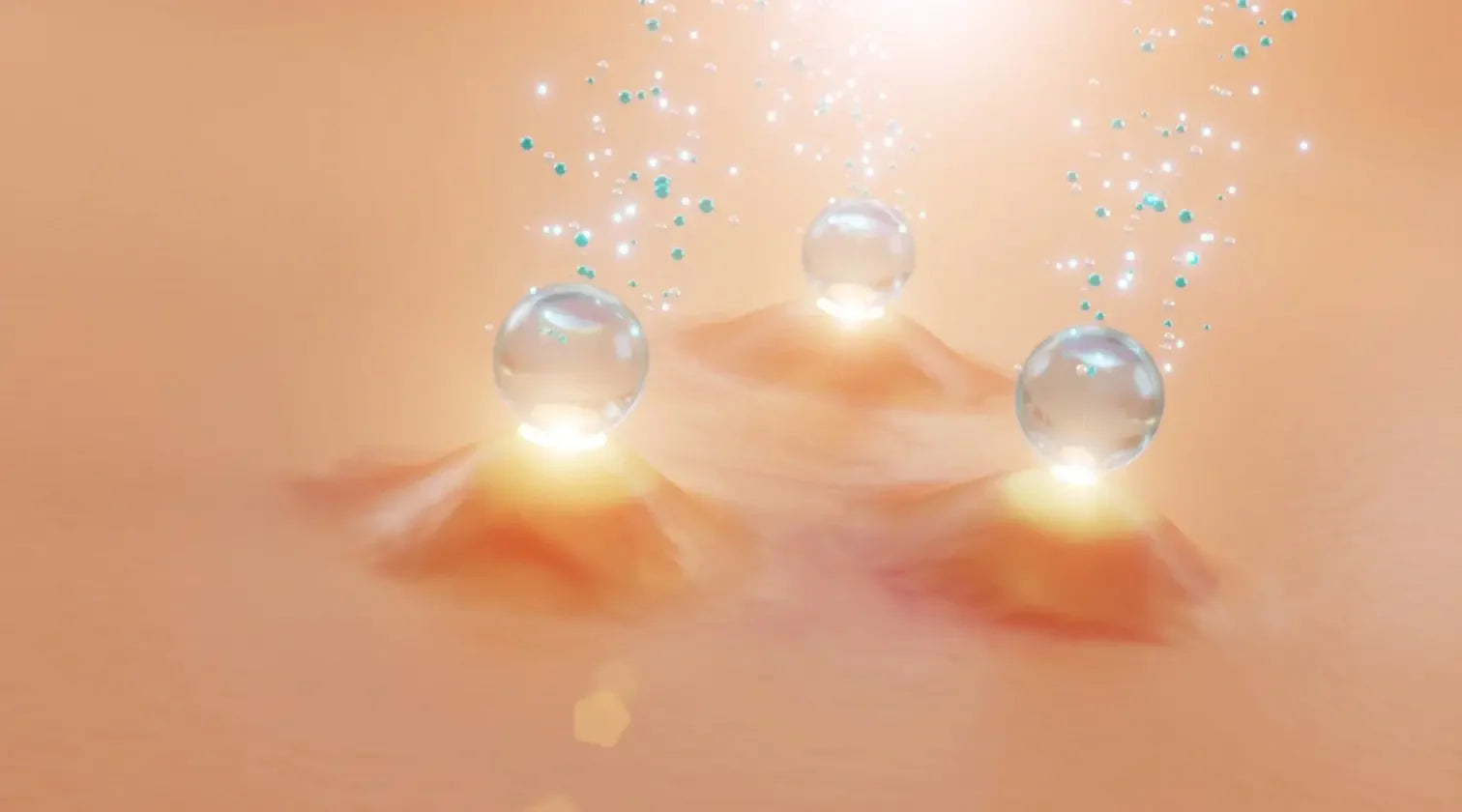What causes acne?
What causes acne?
Does inflammation make acne worse?
Does inflammation make acne worse?
How does niacinamide communicate with the skin?
How does niacinamide communicate with the skin?
Does niacinamide help clear acne?
Does niacinamide help clear acne?
Can niacinamide be used on acne-prone skin types?
- Regulating sebum production: Acne-prone skin often experiences excessive sebum production.[5] Niacinamide is known to regulate and reduce sebum production to prevent breakouts.
- Regulating inflammation: Acne-prone skin often experiences bacterial forms of acne and usually displays high levels of inflammation.[5] The anti-inflammatory properties of this vitamin are beneficial for containing bacterial acne breakouts. It also reduces inflammation-associated redness and swelling.
Can niacinamide be used on acne-prone skin types?
- Regulating sebum production: Acne-prone skin often experiences excessive sebum production.[5] Niacinamide is known to regulate and reduce sebum production to prevent breakouts.
- Regulating inflammation: Acne-prone skin often experiences bacterial forms of acne and usually displays high levels of inflammation.[5] The anti-inflammatory properties of this vitamin are beneficial for containing bacterial acne breakouts. It also reduces inflammation-associated redness and swelling.
Is it better to consume or apply niacinamide to acne-prone skin?
Is it better to consume or apply niacinamide to acne-prone skin?
How much niacinamide do you need if you have acne-prone skin?
How much niacinamide do you need if you have acne-prone skin?
How can you feed your skin niacinamide?
How can you feed your skin niacinamide?
Does niacinamide have the potential to heal acne scars?
Does niacinamide have the potential to heal acne scars?
Does niacinamide improve skin longevity while healing acne?
Does niacinamide improve skin longevity while healing acne?
Are there any potential side effects to using niacinamide on acne-prone skin?
Are there any potential side effects to using niacinamide on acne-prone skin?
- Niacinamide is a form of Vitamin B3 that offers many unique skin benefits, including the ability to strengthen the skin barrier, reduce the appearance of wrinkles, and fight skin hyperpigmentation.
- Niacinamide is also well-known for its ability to fight acne and scarring.
- Niacinamide has the ability to regulate sebum production and reduce inflammation in the skin. This helps avoid breakouts, bacterial acne and scarring.
- It is advisable to use niacinamide within the concentrations of 2 - 5%, conditional on the severity of the acne.
- Niacinamide can stimulate the production of several important structural proteins in the skin, such as ceramide and keratin, strengthening the skin barrier.
- Niacinamide is a form of Vitamin B3 that offers many unique skin benefits, including the ability to strengthen the skin barrier, reduce the appearance of wrinkles, and fight skin hyperpigmentation.
- Niacinamide is also well-known for its ability to fight acne and scarring.
- Niacinamide has the ability to regulate sebum production and reduce inflammation in the skin. This helps avoid breakouts, bacterial acne and scarring.
- It is advisable to use niacinamide within the concentrations of 2 - 5%, conditional on the severity of the acne.
- Niacinamide can stimulate the production of several important structural proteins in the skin, such as ceramide and keratin, strengthening the skin barrier.
- https://www.healthline.com/health/beauty-skin-care/niacinamide
- https://www.healthline.com/health/beauty-skin-care/acne-prone-skin#prevention
- https://www.medicalnewstoday.com/articles/comedonal-acne
- https://cincinnati.chillcryo.net/new-research-acne-is-caused-by-inflammation/
- https://oneskin.co/blogs/reference-lab/acne-prone-skin
- https://www.dermatologytimes.com/view/anti-aging-effects-niacinamide
- https://www.everydayhealth.com/skin-beauty/niacinamide
- https://ro.co/health-guide/niacinamide-for-acne/
- https://www.healthline.com/nutrition/foods-high-in-niacin
- https://www.houstonmethodist.org/blog/articles/2021/jun/will-acne-scars-fade-over-time
- https://dermcollective.com/niacinamide-for-acne/
- https://pubmed.ncbi.nlm.nih.gov/17147561/
- https://banish.com/blogs/article/skin-barrier-acne
- https://www.healthline.com/health/beauty-skin-care/niacinamide
- https://www.healthline.com/health/beauty-skin-care/acne-prone-skin#prevention
- https://www.medicalnewstoday.com/articles/comedonal-acne
- https://cincinnati.chillcryo.net/new-research-acne-is-caused-by-inflammation/
- https://oneskin.co/blogs/reference-lab/acne-prone-skin
- https://www.dermatologytimes.com/view/anti-aging-effects-niacinamide
- https://www.everydayhealth.com/skin-beauty/niacinamide
- https://ro.co/health-guide/niacinamide-for-acne/
- https://www.healthline.com/nutrition/foods-high-in-niacin
- https://www.houstonmethodist.org/blog/articles/2021/jun/will-acne-scars-fade-over-time
- https://dermcollective.com/niacinamide-for-acne/
- https://pubmed.ncbi.nlm.nih.gov/17147561/
- https://banish.com/blogs/article/skin-barrier-acne



